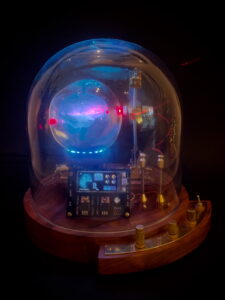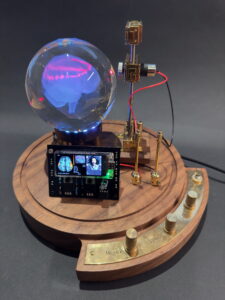
Where are your emotions located? Where reside your fears? Where are you in love? Advances in medical technology have radically changed our perception of the brain. Have you ever had a CT scan? Or an MRI?
The Tehuti Brain Scanner shows in spectacular fashion how these new techniques map your brain layer by layer, searching for the precise locations of your emotions, decisions and control of your muscles.

In the “Full brain scan” mode, the laser starts at the bottom, at the brain stem. While the laser lights up a slice of the rotating brain, you see on the screen how the scan builds up. Once the picture is complete the scanner moves to the next layer. The menu dial offers 8 other modes that each simulate various types of scientific brain research, like “Emotion mapping”, “Brand recognition” and the “Trail-making test”.

When the Tehuti is not busy doing advanced brain science you can enjoy the intricate light patterns projected onto the ceiling.
For more information on the Tehuti Brain Scanner, visit the details page.
If you would like to see the Tehuti in action or have questions, please don’t hesitate to contact me.